With the basics of the cylinder head test being introduced in YBM issue #153, part II of this article will concentrate more heavily on the more pertinent details of the various heads that were tested.
While I have attempted to make the info on the charts self-explanatory, the scoring format may not be clear. The scoring is calculated by adding the average HP and TQ values together, dividing by the cubic inch displacement of the engine (322”), and multiplying by 1000. The ‘Lo’ scores are calculated using the 2500-3500 rpm HP & TQ values while the ‘Hi’ scores are calculated using the HP & TQ values from the 2500-5500 rpm range. The ‘Hi’ and ‘Lo” scoring is calculated using the EMC headers with mufflers. In the header category, the ‘Sand’ is the Sanderson pickup headers with 22” of exhaust extensions and no mufflers while the ‘EMC’ (Engine Masters Challenge) represents a four tube stepped header (1.75”-1.875”) being used with Magnaflow mufflers.
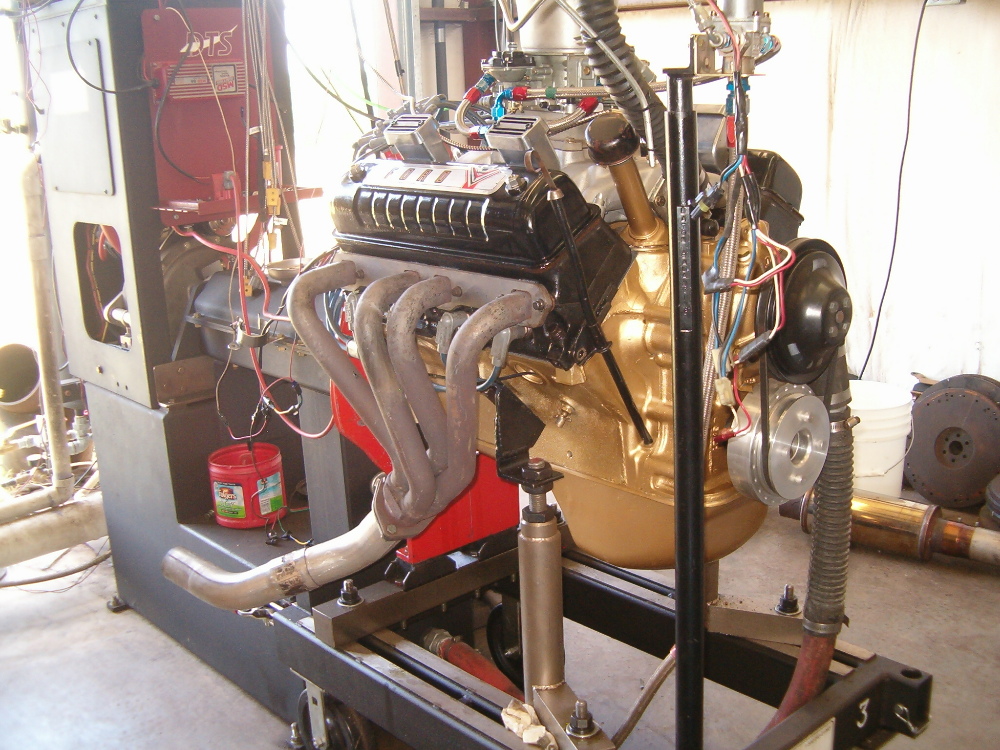
Sanderson headers 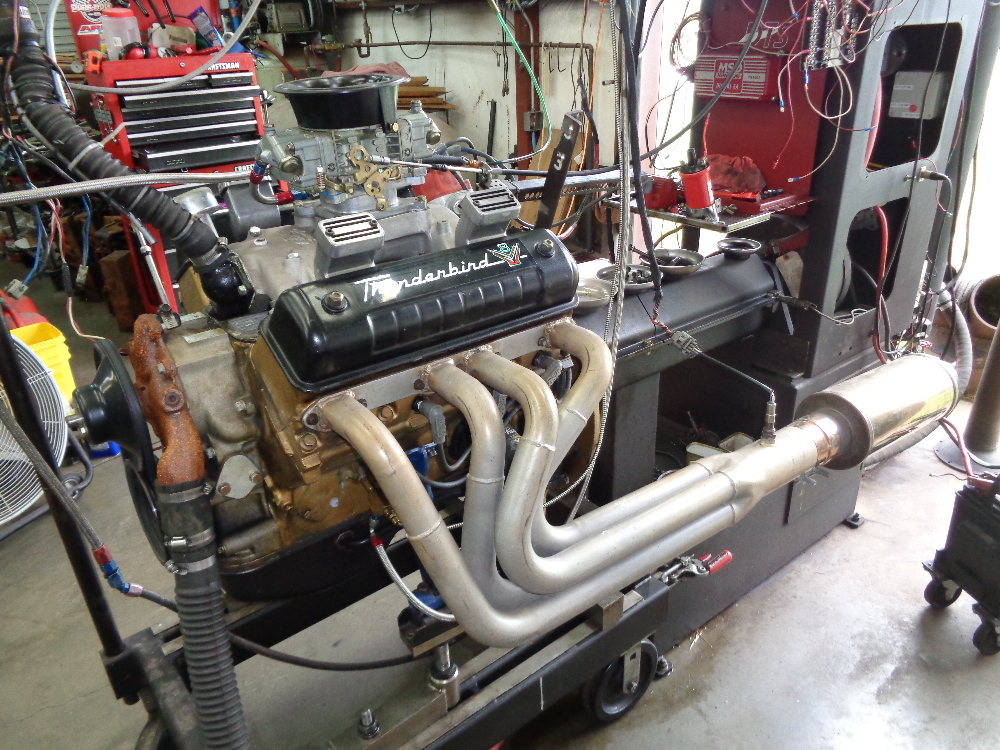
Stepped tube headers
Here are the charts which have the heads grouped together by casting number or general head design.

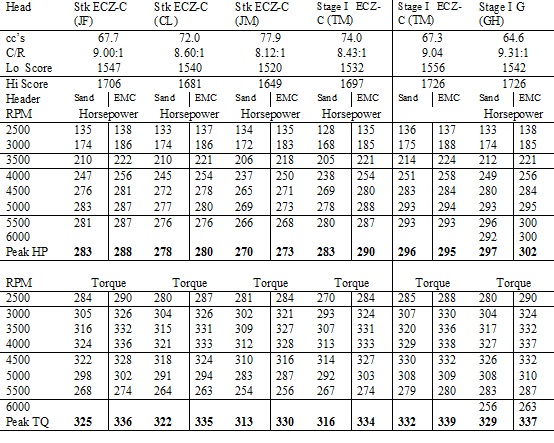
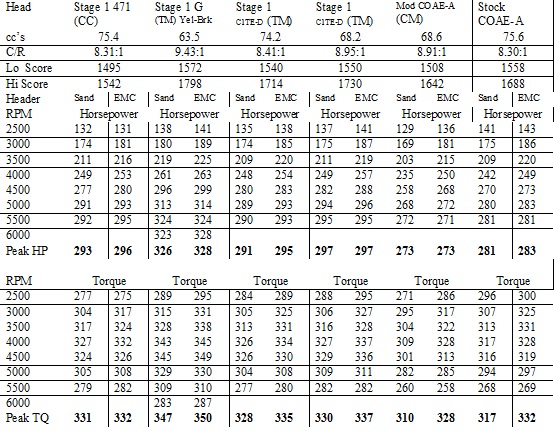
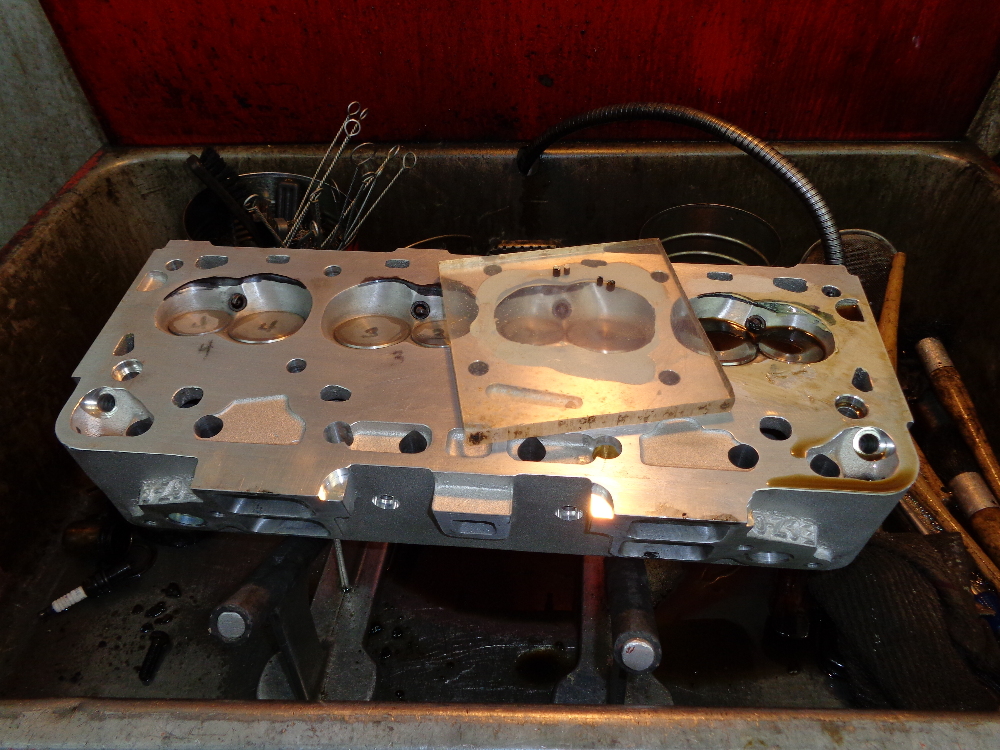
cc’ing the chambers 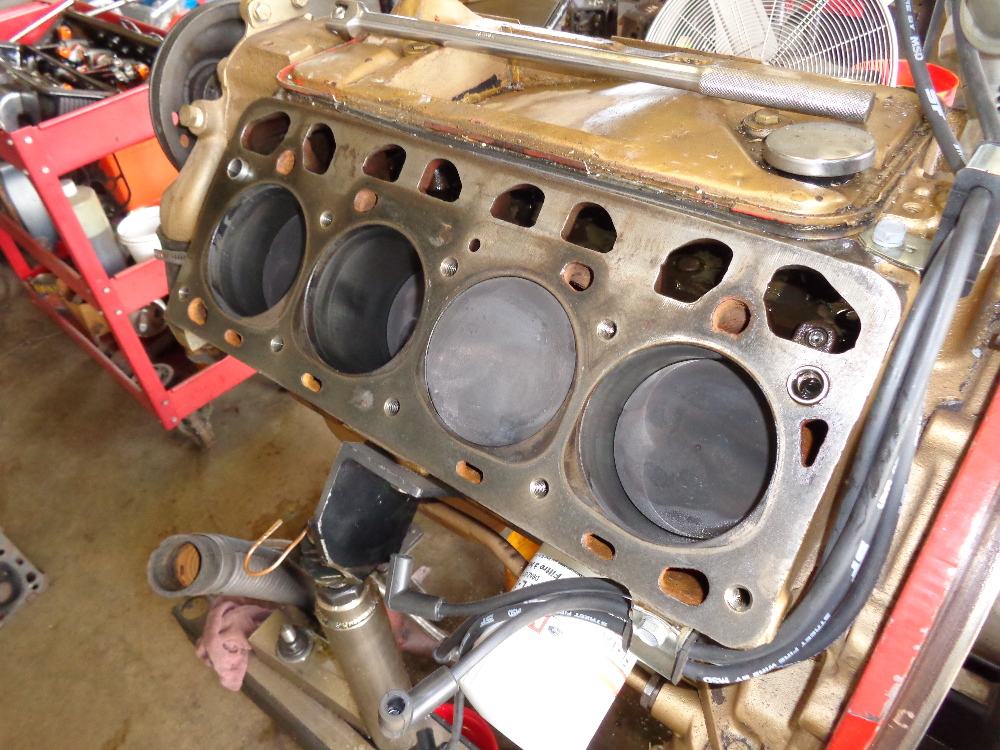
Anbother head change
All these heads were tested using an unmodified Mummert dual plane aluminum 4V intake and a Holley HP series 750 cfm vacuum secondary carburetor. The 312 dyno mule continues to run flawlessly and is now crowding the 1000 dyno pull number. Because flow numbers were only available for just a few of the tested heads and not all the heads, there are no flow numbers published on the charts.
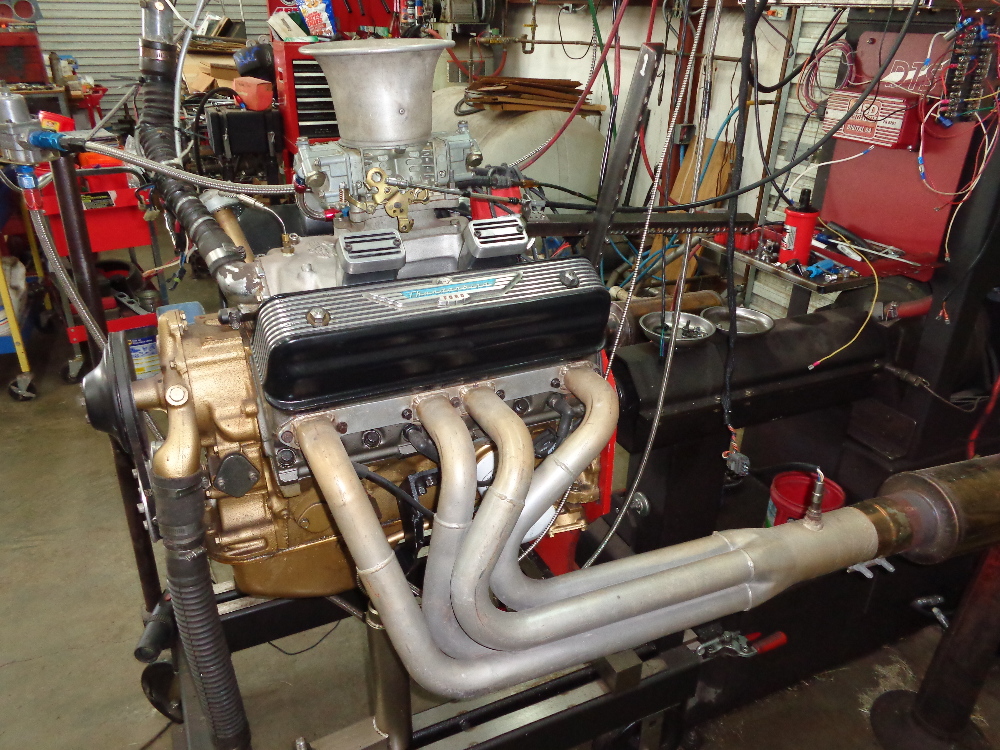
Making a dyno pull 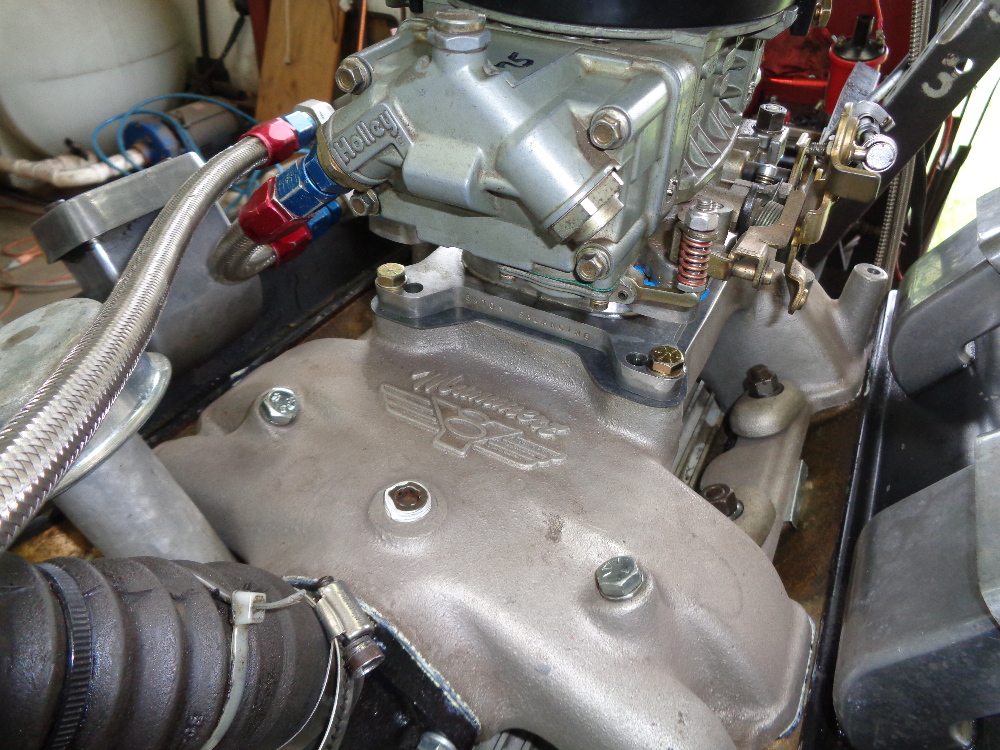
Mummert intake
Until next time, Happy Y Motoring. Ted Eaton.
Originally published in The Y-Block Magazine, Issue #156, Jan-Feb 2020
